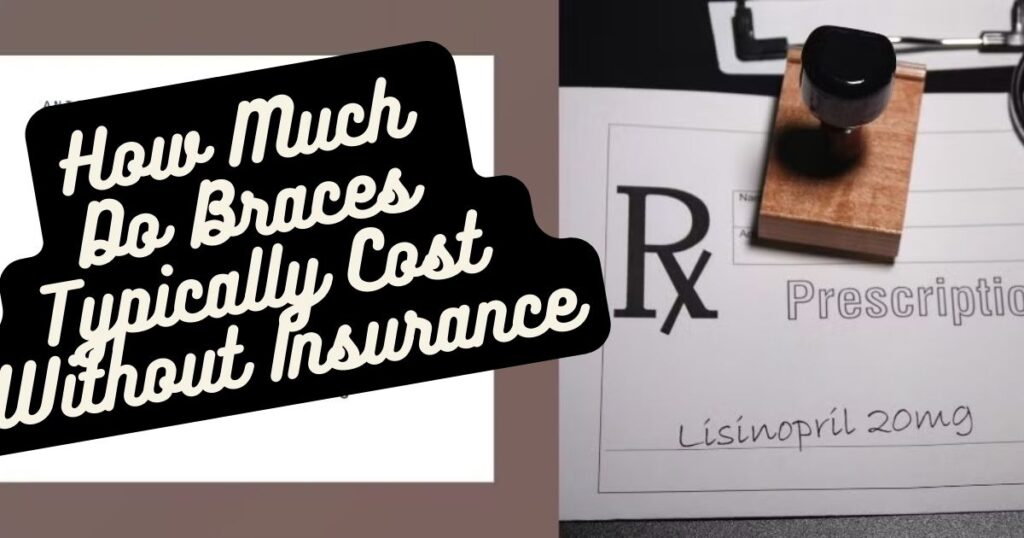Dreaming of a dazzling smile but worried about the cost of braces? You’re not alone. Braces can be a significant financial investment. However, if you qualify for Medicaid, there might be a solution! This article delves into everything you need to know about getting free braces with Medicaid.
Understanding Your Options
Many people wonder, “Can I get free braces with Medicaid?” The answer depends on your specific situation. Medicaid offers dental coverage for braces in certain circumstances, primarily when deemed medically necessary. This article will explore eligibility criteria, the application process, and alternative options for achieving a healthy, confident smile.
How to Get Free Braces with Medicaid

There are several steps involved in obtaining free braces through Medicaid. Let’s break it down:
- Eligibility Criteria for Medicaid Coverage of Braces:
- Age: Medicaid typically covers braces for children under 21. Some states might extend coverage to low-income adults, but it’s less common.
- Medical Necessity: Braces are primarily covered when they address a medical issue impacting oral health, speech, or chewing. Examples include severe malocclusions (bad bites), difficulty speaking clearly, or problems with jaw alignment.
- State Variations: Each state has some autonomy in designing its Medicaid program. Coverage details and eligibility requirements may vary.
- Finding Medicaid-Accepting Orthodontists:
- Contact Your State Medicaid Agency: They can provide a list of orthodontists who accept Medicaid in your area.
- Search Online Directories: Dental association websites and online directories often list providers accepting Medicaid.
- Inquire with Your Dentist: Your dentist might be able to recommend orthodontists who participate in your state’s Medicaid program.
- Application Process for Medicaid Coverage of Braces:
- Gather Documentation: This may include proof of income, residency, and any medical records supporting the need for braces.
- Contact Your Local Medicaid Office: They will guide you through the application process and determine your eligibility for orthodontic treatment.
- Seek Preauthorization: Once an orthodontist examines your teeth, they will need to submit a treatment plan for preauthorization by Medicaid to confirm medical necessity.
Remember, this is a general overview. Be sure to contact your state’s Medicaid agency for the most up-to-date information and specific requirements.
Interesting Fact: Braces Colors That Make Your Teeth Look Whiter
Can You Get Free Braces with Medicaid?
While Medicaid can cover braces in specific situations, obtaining them might not be straightforward. The key factor is medical necessity. Here’s a breakdown:
Who Qualifies for Free Braces with Medicaid?
- Children under 21: Children with severe malocclusions or orthodontic issues that impact their oral health are more likely to qualify.
- Adults with Medical Necessity: Adults who have experienced jaw injuries, suffer from sleep apnea caused by jaw misalignment, or have temporomandibular joint disorders (TMJ) might be eligible.
Who Might Not Qualify for Free Braces with Medicaid?
- Adults Seeking Cosmetic Improvement: If your primary concern is cosmetic alignment without a significant underlying medical issue, Medicaid likely won’t cover the cost of braces.
- Individuals Exceeding Income Limits: Each state has income eligibility requirements for Medicaid. If your income surpasses the threshold, you might not qualify.
Understanding Medicaid’s Coverage for Braces
Medicaid coverage for braces typically focuses on correcting functional problems rather than purely cosmetic concerns. Here’s a closer look:
- Focus on Medical Necessity: The primary purpose of Medicaid-covered braces is to address issues affecting your oral health, speech, chewing, or jaw function.
- Treatment Plan Approval: An orthodontist must submit a treatment plan for preauthorization, demonstrating the medical need for braces.
- Coverage Variations: The extent of coverage can vary by state. Some states might only cover specific types of braces or limit the treatment duration.
Medicaid Coverage for Braces in Different States
Medicaid coverage for orthodontic treatment, including braces, varies from state to state in the United States. While some states provide comprehensive coverage for braces, others may have limited coverage or specific eligibility criteria. Here is an overview of Medicaid coverage for braces in different states:
| State | Medicaid Coverage for Braces |
|---|---|
| California | Medicaid typically covers braces for children under 21 who have a severe dental condition affecting their health and well-being. |
| New York | Medicaid may cover orthodontic treatment, including braces, for children under 21 if deemed medically necessary. |
| Texas | Medicaid coverage for braces is available for children under 21 who meet specific criteria, such as severe orthodontic issues affecting their oral health. |
| Florida | Medicaid coverage for braces may be available for children and adolescents under 21 who have qualifying dental conditions. |
| Ohio | Medicaid may cover orthodontic treatment, including braces, for children and young adults under 21 with qualifying dental conditions. |
| Pennsylvania | Medicaid coverage for braces may be available for children under 21 who meet specific eligibility criteria based on their dental health needs. |
| Illinois | Medicaid coverage for braces may be provided for children and adolescents under 21 with severe orthodontic issues impacting their oral health. |
| Georgia | Medicaid coverage for braces is available for children under 21 with qualifying dental conditions that require orthodontic treatment. |
| Michigan | Medicaid may cover braces for children under 21 with severe dental conditions affecting their oral health and function. |
| North Carolina | Medicaid coverage for braces may be available for children under 21 who meet specific eligibility criteria based on their dental health needs. |
How Much Do Braces Typically Cost Without Insurance?

Understanding the high cost of braces can make Medicaid coverage even more appealing. Here’s a breakdown of the financial burden:
- Average Cost of Braces: The national average cost of braces can range from $5,000 to $10,000 depending on factors like treatment complexity, location, and the type of braces used.
- Financial Burden: This significant expense can be a barrier for many families seeking orthodontic treatment.
Why Are Braces Expensive?
The high cost of braces can be attributed to several factors:
- Specialist Expertise: Orthodontists undergo extensive training and require specialized equipment to provide orthodontic care.
- Length of Treatment: Braces typically require treatment for 18-24 months, leading to ongoing costs associated with materials and adjustments.
- Materials and Technology: The type of braces used (metal, ceramic, clear aligners) and any advanced technology involved can impact the overall cost.
Other Ways to Get Free or Affordable Braces
If you don’t qualify for Medicaid or your state’s coverage limitations don’t meet your needs, there are alternative options to explore:
- Dental Schools and Community Health Centers: Dental schools often offer orthodontic treatment at reduced costs to provide experience for students under the supervision of licensed orthodontists. Community health centers might also offer affordable braces based on income.
- Flexible Payment Plans: Some orthodontists offer extended payment plans or financing options to make treatment more manageable financially.
- Dental Insurance Plans: Consider exploring dental insurance plans with orthodontic coverage. However, these plans might have waiting periods, coverage limitations, or require co-pays.
Smile for a Lifetime and Smiles Change Lives
A beautiful smile can boost your confidence and self-esteem. It can also impact your overall health by improving your ability to chew properly and speak clearly. Don’t let financial limitations prevent you from achieving a healthy smile. Explore your options with Medicaid, dental schools, community health centers, or affordable payment plans. Remember, a brighter smile can brighten your life.
Also Read: How Much Does A Dental Crown Cost?
Frequently Asked Questions (FAQs)
Does Medicaid cover braces for adults?
Generally, Medicaid primarily covers braces for children and adolescents under the age of 21. However, coverage for adults may vary depending on the state and specific circumstances.
Can you get braces even if you don’t need them?
Orthodontic treatment, including braces, is typically recommended based on clinical need rather than cosmetic preference. Getting braces without a medical necessity may not be covered by insurance and is best discussed with an orthodontist.
What is the best age for braces?
The ideal age for braces varies for each individual, but orthodontic treatment often begins between the ages of 9 and 14, when the jaw is still developing and teeth are more responsive to correction.
Will Medicaid cover Invisalign?
Medicaid coverage for Invisalign, a type of clear aligner therapy, is less common compared to traditional braces. Coverage eligibility may depend on specific criteria and vary by state Medicaid programs. It’s recommended to consult with your Medicaid provider for more information.
Final Thoughts
While obtaining free braces with Medicaid might involve specific criteria and state variations, it’s still a viable option for many. Understanding your eligibility, the application process, and alternative solutions can empower you on your journey towards a healthy and confident smile. Remember, don’t hesitate to contact your state’s Medicaid agency or dental professionals for the most up-to-date information and guidance specific to your situation.








